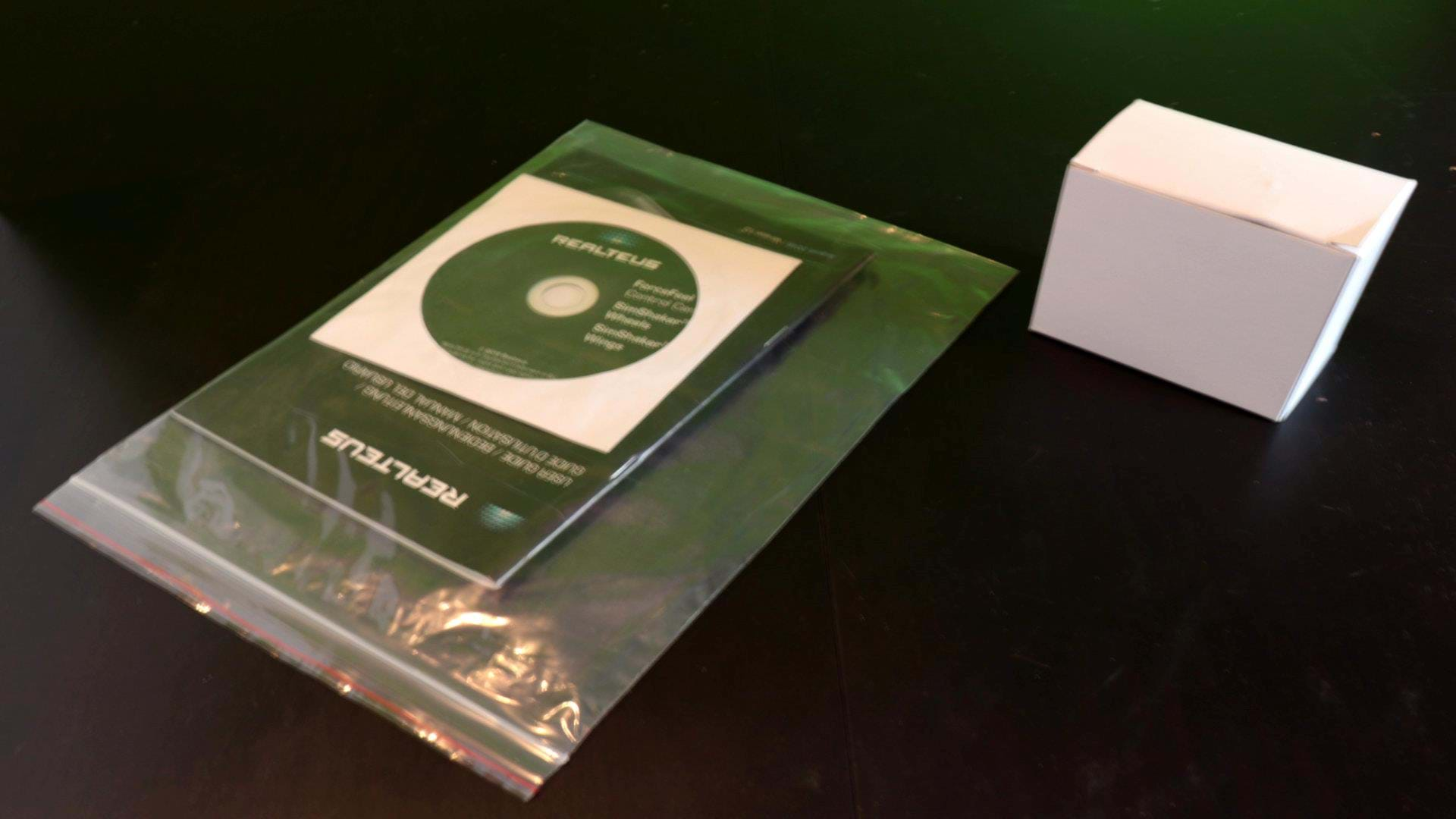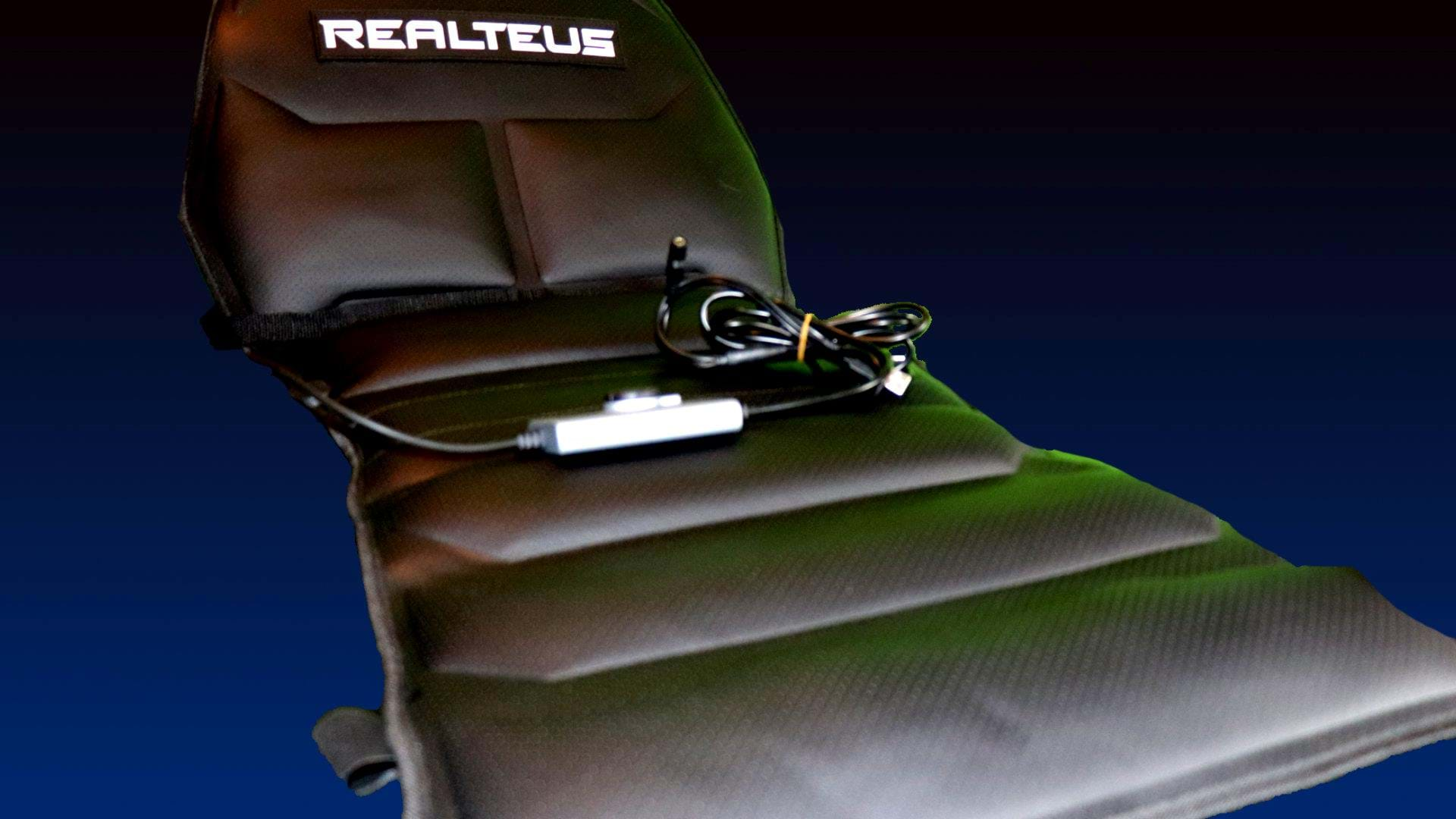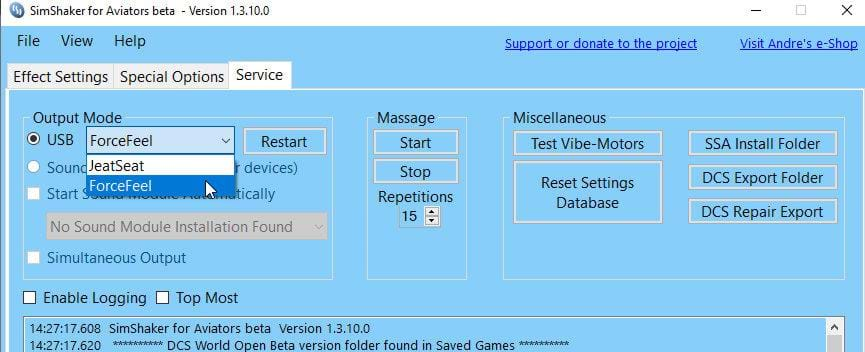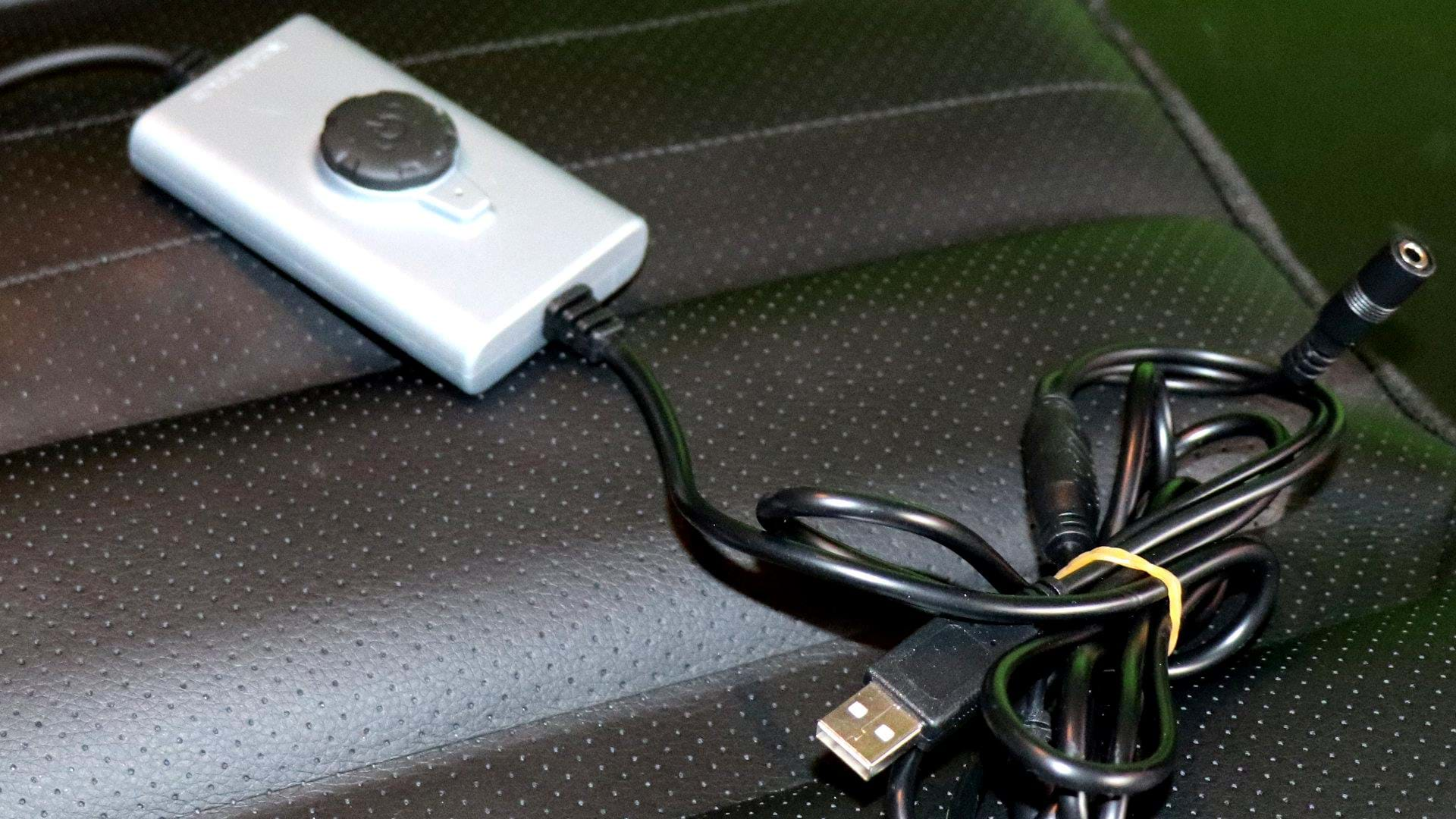A haptic seat cover. That’s Realteus ForceFeel in a nutshell.
Sounds too simplistic? I know it does.
But the Realteus ForceFeel is pretty much that. A cover that you place on your seat, which has a few “haptic actuators” (that’s fancy talk for “little things that vibrate”) that act independently. Eight of them, actually: four on the back and four under your posterior.
You connect it to your computer (via USB or audio – more on that later) and it will pick up some data or sound from the computer and it will try to replicate part of what you should feel if you were sitting inside an aircraft (or a car or whatever is it that you are playing but we are obviously focusing on helicopters here).
“Part of what you should feel”. That’s something you need to keep in mind. Part, not all of it. And don’t expect it to be perfect.
Opening the box
Let’s start with the beginning.
When you receive the Realteus ForceFeel you’ll get the obvious cover with some wires and a control box, a small bag with the manual and a CD (which I didn’t open or use) and the power supply.
No more, no less. No more needed either. It’s a rather compact system.
Installation
To install it, I just had to put it on my chair, plug it into a power outlet and an USB port. The physical part was done.
I then downloaded and installed SimShaker for Aviators, ran it and configured it to use the ForceFeel (by default it’s set up for the JetSeat).
I turned X-Plane support on, selected X-Plane’s folder and that was it.
No, really that was it. Next!
USB vs Sound
You can use the Realteus ForceFeel in two ways: USB or sound.
Sound is the simplest way. The software picks up the sound coming out of your computer and, using the frequencies, it activates the actuators. Now, this is obviously limited.
The ForceFeel is depending on the sound and, very often, what you hear is not really what you should be feeling. You are also limited to 2 channels (left and right) so there’s no major difference in the actuators except, well, left and right.
Enter the USB model.
With the USB mode, we can get data from the sims and get each actuator to activate itself based on that data. Is it the engine we’re getting data from? Well, the whole helicopter should vibrate, then.
Are we touching our skids down? Time to hit that on our bottoms.
With USB mode, we can get more precision on the 8 actuators and get a more realistic feel, this getting better results.
I have tried both and I can vouch for the USB one. It makes quite a difference.
Fortunately, all the major sims are supported on this mode.
The sims
I have tried the 3 most used sims on the market and a favorite of mine for VR: Aerofly FS2. From all the sims I tried, Aerofly FS2 is the one that doesn’t have native support, so it was the one I had to use with sound.
Digital Combat Simulator (DCS) and Prepar3d (P3D) behaved flawlessly.
I wasn’t expecting to “feel” every little thing and every detail, and I was right. But, let’s be honest here: we hardly will. There are some forces that we will simply not get to replicate unless we actually feel them physically. Like G-force, for example. Or any kind of movement.
Nonetheless, the kind of feedback I got from the Realteus ForceFeel was fantastic and it exceeded my expectations a little.
In DCS I could feel the vibration when crossing ETL (Effective Translational Lift) and not just hear it. Sometimes I started feeling that vibration a little earlier than the actual sound or cockpit shake which was really cool.
Feeling the skids touch the ground, also helps a lot and you get better awareness of what’s happening. You don’t need to look down as much when you are landing on an area that may be rough or bumpy or when you switch helicopters and you need your brain to get used to the new dimensions. You just feel this little “thump”. That’s cool!
X-Plane may need some work
On X-Plane, though, I had a few issues. The problem is that I didn’t manage to replicate the conditions as it occurred randomly.
After some time (usually over 20 minutes) of flying in X-Plane, the Realteus ForceFeel simply stopped working. It didn’t happen to me on DCS or Prepar3D, but it did happen a few times on X-Plane.
I have had a previous unit to review in which this happened a lot more (all the time) after just a few minutes but this new unit still has some issues, which is making me think this is not a hardware problem but perhaps a connection issue with the software.
Disconnecting the unit and reconnecting it solved it.
Realteus ForceFeel and VR
Do I really need to say anything? VR puts you inside the cockpit, and the Realteus ForceFeel enhances that experience.
Granted, despite the price (I’ve seen more expensive solutions in the past), it’s still an investment. Around US$200, which can be quite a bit. A lot of folks don’t spend that on a joystick. And $200 is 2/3 or the price of the Oculus Rift-S currently. But the fact is that if you already got a Rift, chances are you are looking for something else to further improve your simming experience.
The Realteus ForceFeel may be it.
The bad side
Other than the issue with X-Plane, I just have a small complain: the plastic control box doesn’t feel sturdy at all. Granted, I don’t plan on using it a lot (I have it set up now it’s just a matter of connecting and disconnecting the cables) but still, it does feel a bit odd.
This is NOT a deal breaker, though. At all. At least for me.
In conclusion
Look, I will be 100% honest with you here. I wouldn’t make the Realteus ForceFeel my #1 priority, at all. From all the pieces of hardware that a simmer “needs” to have this doesn’t even make it into the top 5. A good computer, good joystick, pedals, headset and VR would make my top 5 (did I forget something?).
But the Realteus ForceFeel is a great companion for your simming, even if you don’t VR. I honestly don’t use it all the time (I sim on my office chair, which I use daily for my regular job) and it can be uncomfortable after sitting 8+ hours on it. I also don’t want to ruin it with excessive use (meaning me sitting on top of it pretty much all the time).
When I do have some time to have fun, though, it only takes me 3 minutes to get it installed and working and it does add up to my simming.
So, if you are on the market for something like this, I’d say, definitely give the Realteus ForceFeel a look. It’s easy to install, works very well and I love how it has 8 actuators instead of being a unit that just shakes your chair independently of what’s happening. If you’re not using the USB connection, of course.











